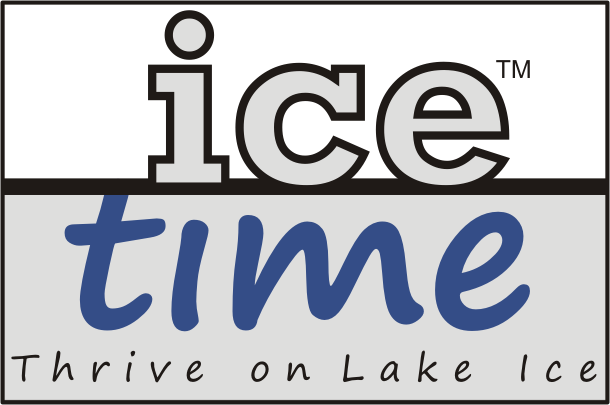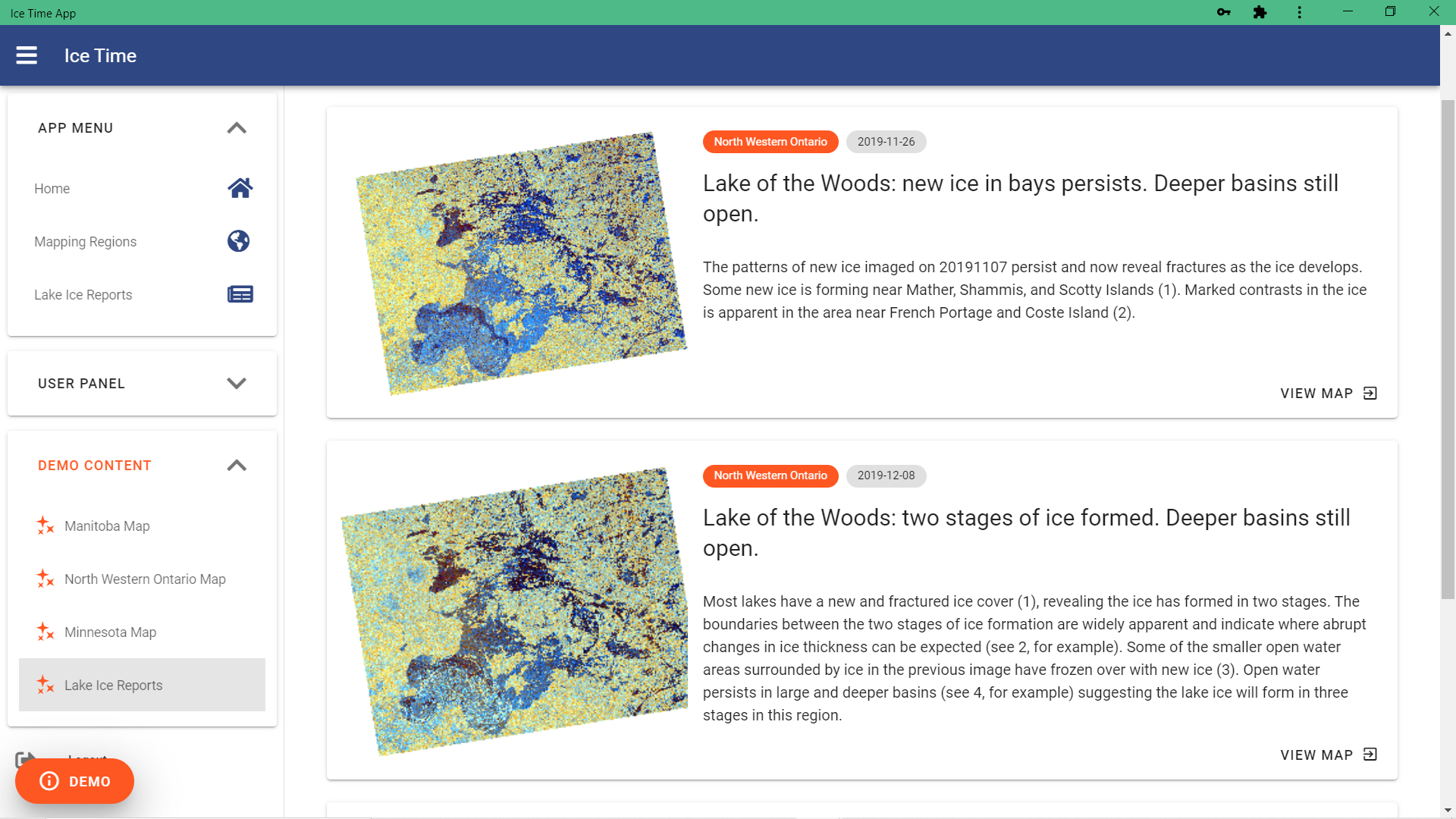How does it work?
Satellite radar imaging
Successful ice travel includes understanding the types of ice, monitoring the changes in the ice, and the hazards that form. Ice Time™ does this for you by displaying current high resolution satellite radar images published to you in near real-time, usually within a day. Radar satellites “see” at night and through clouds. In the winter radar also sees through the snow to the ice. These all-weather satellites provide the images we need to monitor lake ice frequently and reliably.
Radar satellites emit energy so image data can be collected through clouds, at night, through snow.
What do Ice Time™ maps look like?
Your radar maps will show changes in the ice over time. The images from each ice period are displayed differently in Ice Time™ so they are easy to understand. Ice Time™ uses false colors because radar images do not need or use sunlight to form images. Let’s start with new ice and winter ice as examples. See the descriptions below each image to interpret the colors.
New ice mapping. Southern basin of Lake Winnipeg during freeze up showing fragmented ice sheets drifting north exposing open water in the south. Forests are yellow, agricultural fields are light blue. Mapping icons are not displayed at this scale.
Winter ice mapping. Southern basin of Lake Winnipeg. Rubble (rough) ice is mapped in red, pressure ridges are yellow, and smooth ice is blue. The smoothest ice formed under low wind, and appears dark blue. Land is grey. Remember, you are seeing through the snow cover! Mapping icons are not displayed at this scale.








